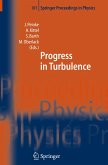This book is a detailed look at some of the more modern issues of hydrodynamic stability, including transient growth, eigenvalue spectra, secondary instability. Analytical results and numerical simulations, linear and (selected) nonlinear stability methods will be presented. By including classical results as well as recent developments in the field of hydrodynamic stability and transition, the book can be used as a textbook for an introductory, graduate-level course in stability theory or for a special-topics fluids course. It will also be of value as a reference for researchers in the field of hydrodynamic stability theory or with an interest in recent developments in fluid dynamics. Since the appearance of "Drazin & Reid", no book on hydrodynamic stability theory has been published. However, stability theory has seen a rapid development over the past decade. Direct numerical simulations of transition to turbulence and linear analysis based on the initial-value problem are two of many such developments that will be included in the book.
The field of hydrodynamic stability has a long history, going back to Rey nolds and Lord Rayleigh in the late 19th century. Because of its central role in many research efforts involving fluid flow, stability theory has grown into a mature discipline, firmly based on a large body of knowledge and a vast body of literature. The sheer size of this field has made it difficult for young researchers to access this exciting area of fluid dynamics. For this reason, writing a book on the subject of hydrodynamic stability theory and transition is a daunting endeavor, especially as any book on stability theory will have to follow into the footsteps of the classical treatises by Lin (1955), Betchov & Criminale (1967), Joseph (1971), and Drazin & Reid (1981). Each of these books has marked an important development in stability theory and has laid the foundation for many researchers to advance our understanding of stability and transition in shear flows.
Hinweis: Dieser Artikel kann nur an eine deutsche Lieferadresse ausgeliefert werden.
The field of hydrodynamic stability has a long history, going back to Rey nolds and Lord Rayleigh in the late 19th century. Because of its central role in many research efforts involving fluid flow, stability theory has grown into a mature discipline, firmly based on a large body of knowledge and a vast body of literature. The sheer size of this field has made it difficult for young researchers to access this exciting area of fluid dynamics. For this reason, writing a book on the subject of hydrodynamic stability theory and transition is a daunting endeavor, especially as any book on stability theory will have to follow into the footsteps of the classical treatises by Lin (1955), Betchov & Criminale (1967), Joseph (1971), and Drazin & Reid (1981). Each of these books has marked an important development in stability theory and has laid the foundation for many researchers to advance our understanding of stability and transition in shear flows.
Hinweis: Dieser Artikel kann nur an eine deutsche Lieferadresse ausgeliefert werden.
From the reviews:
SIAM REVIEW
"This book presents a modern treatment of stability in shear flows. Stability theory has seen a number of classic treatments over the years...Schmid and Henningson's book builds on these and offers much new material relevant to stability in shear flows...The MATLAB codes included in the appendix and a discussion of the effects of rounding error and resolution on the computations of eigenvalues of linear stability operators will be particularly helpful for students and researchers as they get started with stability computations...As the basis for a course, the first part of the book would permit students to build a solid foundation in classical and modern stability theory, while a selection of advanced topics from the second half of the book could be treated later in the course or through projects and independent study by students."
ZENTRALBLATT MATH
"The book addresses to graduate students as well as to a broad community of researchers with a basic knowledge of fundamental fluid dynamics...The topics are treated with mathematical rigor while the physical motivation and usefulness of mathematical concepts is kept close at hand. The work is elegantly structured, and the graphical material is very suggestive."
SIAM REVIEW
"This book presents a modern treatment of stability in shear flows. Stability theory has seen a number of classic treatments over the years...Schmid and Henningson's book builds on these and offers much new material relevant to stability in shear flows...The MATLAB codes included in the appendix and a discussion of the effects of rounding error and resolution on the computations of eigenvalues of linear stability operators will be particularly helpful for students and researchers as they get started with stability computations...As the basis for a course, the first part of the book would permit students to build a solid foundation in classical and modern stability theory, while a selection of advanced topics from the second half of the book could be treated later in the course or through projects and independent study by students."
ZENTRALBLATT MATH
"The book addresses to graduate students as well as to a broad community of researchers with a basic knowledge of fundamental fluid dynamics...The topics are treated with mathematical rigor while the physical motivation and usefulness of mathematical concepts is kept close at hand. The work is elegantly structured, and the graphical material is very suggestive."







